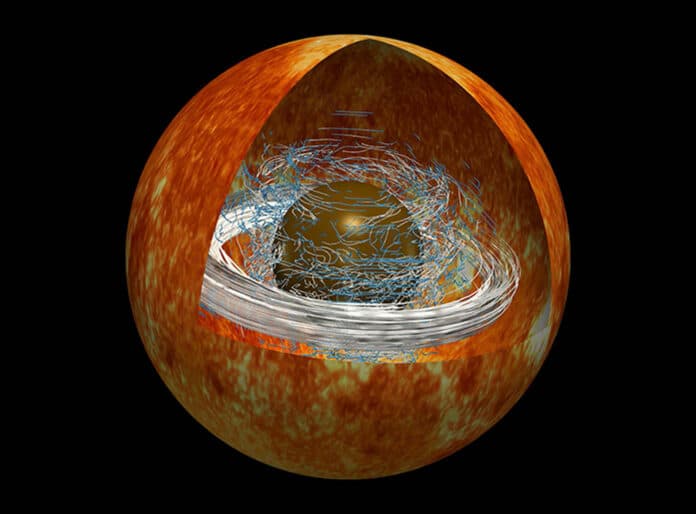Internal rotation dynamics of a star affect a star’s evolution through poorly understood transport and mixing mechanisms. Magnetic fields can transport angular momentum and chemical elements. However, it is still being determined where magnetism in stellar radiative layers came from.
The star’s core contract under specific conditions. When this occurs, they begin to spin more quickly than the star’s outer layers. Astonishingly, the cores of these stars revolve more slowly than predictions, according to the field of asteroseismology, which studies star oscillations.
Why is this so?
Three French scientists from CNRS, INRIA, and ENS-PSL have studied this question. They used numerical simulations to show how a stellar dynamo can form in purely radiative layers (meaning that they have no convection). They identified a subcritical transition from laminar flow to turbulence caused by the generation of a magnetic dynamo.
Their numerical simulations, which model plasma flow in the deep layers of a star, have shown that an internal magnetic field can produce the slowing down of the core. More specifically, plasma flow can amplify a magnetic field to the point where it generates turbulent solid motions. Such turbulence may further amplify the magnetic field until it causes the star’s core to spin down.
The outcomes of the research team’s simulations concur with numerous star asteroseismological observations. Additionally, the simulations demonstrate that the magnetic field would be obscured by the star’s outer layers, which accounts for why no magnetic field of this kind has yet been detected using modern methods.
Journal Reference:
- Ludovic Petitdemange et al. Spin-down by dynamo action in simulated radiative stellar layers. Science. DOI: 10.1126/science.abk2169
